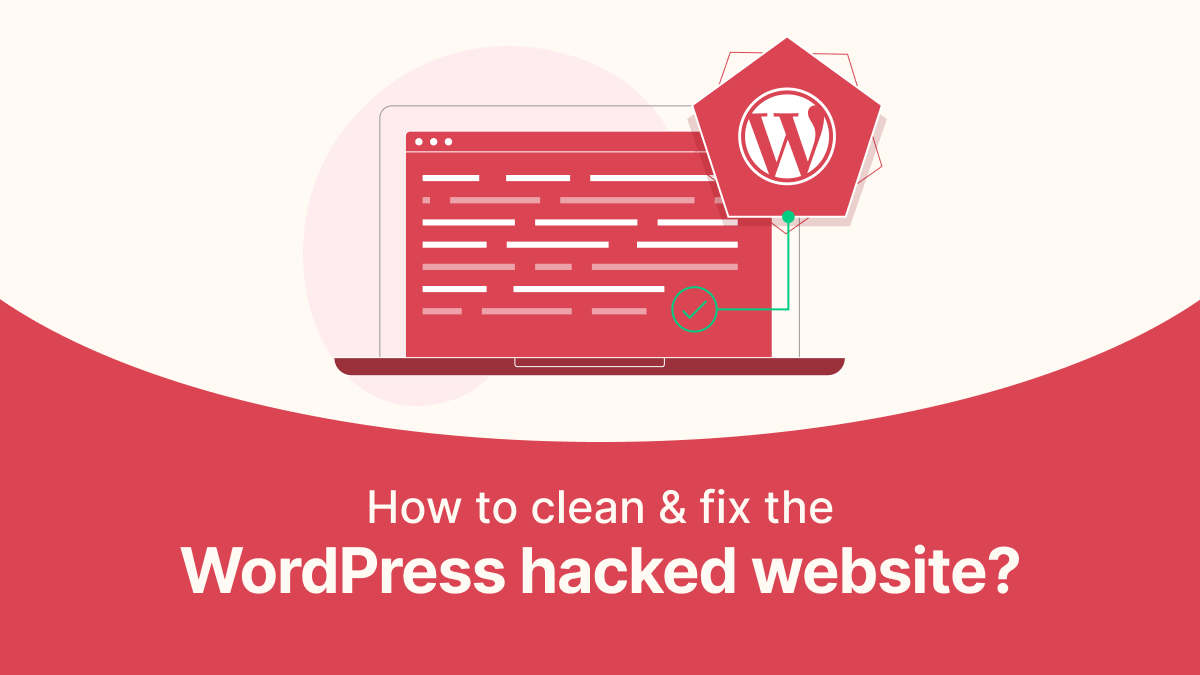If you’re reading this, chances are your WordPress site has been hacked, and you’re in a bit of a panic. Don't worry—you're not alone. Thousands of WordPress websites are targeted by hackers daily, but the good news is that with the right steps, you can regain control and secure your site. This guide will walk you through how to clean & fix the WordPress hacked website step by step.
Step 1: Identify the Hack
Before you start to fix the WordPress hacked website, you need to know what you're dealing with. Common signs of a hacked site include:
- Unfamiliar content or links appearing on your site
- Google blacklisting your site with a warning
- Suspicious logins or users
- Slow performance or strange behavior
- Website redirects to unknown sites
Step 2: Backup Your Website
Before making any changes, take a full backup of your website, including the database and files. This ensures that you can restore your site if anything goes wrong during the cleaning process.
Step 3: Put Your Site in Maintenance Mode
To prevent further damage or visitors accessing your site while you clean it, put your site in maintenance mode. You can use a plugin like WP Maintenance Mode for this purpose.
Step 4: Scan Your Website for Malware
To clean & fix the WordPress hacked website, the next crucial step is to scan for malware. Several plugins like Wordfence, Sucuri, or MalCare can help you identify infected files and malicious code. Make sure to run a deep scan to uncover all threats.
Step 5: Remove Malicious Code and Files
Once the scan is complete, remove all infected files and malicious code. This may involve:
- Deleting unknown plugins or themes
- Removing suspicious code from your WordPress files
- Replacing core WordPress files with fresh copies from WordPress.org
If you're not sure how to do this manually, consider using a security plugin to automatically clean up the infected files.
Step 6: Change All Passwords
Hackers often gain access through weak or compromised passwords. Change all passwords related to your website, including WordPress admin, database, FTP, and hosting account passwords. Ensure that the new passwords are strong and unique.
Step 7: Update Everything
Outdated plugins, themes, and WordPress versions are common entry points for hackers. Update everything to the latest versions to close any security holes. This includes:
- WordPress core
- Plugins
- Themes
Step 8: Reinstall Plugins and Themes
If you suspect that a plugin or theme was the entry point for the hack, it’s best to delete and reinstall them from a trusted source. Avoid using nulled or pirated versions of premium plugins and themes, as they often contain malicious code.
Step 9: Secure Your Website
Now that you’ve managed to fix the WordPress hacked website, it's time to secure it to prevent future attacks. Here are some steps you can take:
- Install a security plugin like Wordfence, Sucuri, or iThemes Security
- Set up a web application firewall (WAF)
- Regularly back up your website and store the backups securely
- Limit login attempts and use two-factor authentication (2FA)
- Disable file editing from the WordPress dashboard
Step 10: Submit Your Site to Google for Review
If your site was blacklisted by Google, you’ll need to submit it for a review once you’ve cleaned it up. Use Google Search Console to request a review, and they will remove the warning if your site is deemed clean.
Conclusion
Getting hacked is stressful, but by following these steps, you can clean & fix the WordPress hacked website and get back to business. Remember, prevention is better than cure—regularly updating your site, using strong passwords, and employing security measures can keep your website safe from future attacks.
If you’re not comfortable handling this yourself, it’s always a good idea to hire a professional to fix the WordPress hacked website for you. Your website’s security is worth the investment.
For a more detailed step-by-step guide on this topic, check out our anchor text: How to Clean & Fix the WordPress Hacked Website? - Step by Step Guide.






Comments